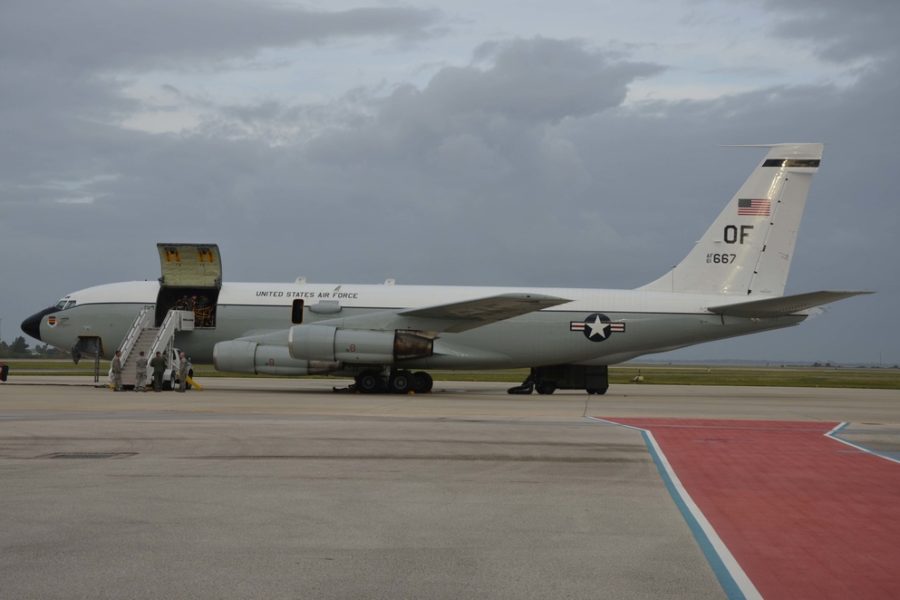WC-135’s primary mission is nuclear test monitoring, airborne radiological sampling, and arms control treaty verification. Airframes are either a modified C-135B or EC-135C Looking Glass equipped with air sampling and collection equipment.
The aircraft primarily support monitoring under the 1963 Limited Nuclear Test Ban Treaty. Air sampling WB-29s detected debris from the Soviet Union’s first atomic test in 1949, and subsequent aircraft have monitored recent weapons tests in North Korea, as well as the Chernobyl and Fukushima nuclear disasters. 
The WC-135’s sampling and collection suite allows mission crew to detect radioactive “clouds” in real time. The collection system uses external flow-through devices to collect particles on filter paper for later analysis. The podded particulate sampler/Radiation Monitoring and Analysis System (RMAS) detects radiation contact, and the Directional Gamma Sensor System (DGSS) guides the crew toward the plume for collection. The Whole Air Collection System (WACS) captures and stores radioactive samples from the aircraft’s bleedair system.
An integrated control system permits real-time mission system interface and monitors internal and external radiation-levels for safety and analysis. USAF deemed replacing the aging fleet to be more cost-effective than re-engining and modernization.
Conversion of three KC-135R tankers to WC-135R standards began in 2019 utilizing the same sensor suite. The C-130J-mounted Harvester WACS/Particulate Airborne Collection Systems (PACS) augments Constant Phoenix and a modular system deployable on the KC-46 or RPA platform is under development.
The sole WC-135C—serial 62-3582—retired on Nov. 16, 2020, and the remaining aircraft will be sustained until the WC-135R enters service in 2022.
Contractor: Boeing.
First Flight: 1965.
Delivered: 1965-96.
IOC: December 1965; 2022 (WC-135R) planned.
Production: Two (WC-135C/W); three (WC-135R) (planned).
Inventory: One (WC-135C); one (WC-135W).
Operator: ACC.
Aircraft Location: Offutt AFB, Neb.
Active Variants: •WC-135C. Modified EC-135C equipped for radiological monitoring and air sampling. •WC-135R. Modified KC-135R tankers, planned to replace the aging WC135C/W fleet. •WC-135W. Modified C-135B equipped for radiological monitoring and air sampling.
Dimensions: Span 130.8 ft, length 136.3 ft, height 41.7 ft.
Weight: Max T-O 300,500 lb. (WC-135C/W); 322,500 lb. (WC-135R).
Power Plant: Four Pratt & Whitney TF33-P-5 turbofans, each 16,050 lb thrust. (WC-135C/W); Four CFM International CFM56-2 turbofans, each 21,634 lb thrust (WC-135R).
Performance: Speed 403 mph, range 4,600 miles (farther with air refueling) (WC-135C/W); speed 530 mph, range approx. 3,900 miles (farther with air refueling) (WC-135R).
Ceiling: 40,000 ft. (WC-135C/W); 50,000 ft. (WC-135R).
Accommodation: Two pilots, navigator, up to 31 special equipment operators/observers as required.
